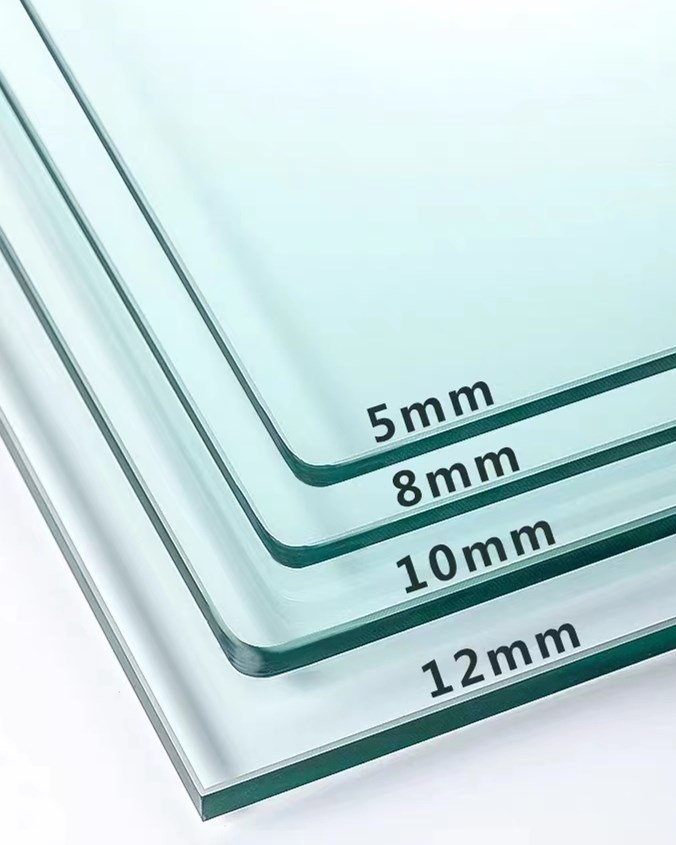Tempered Glass: The Strong and Versatile Material for Modern Life
2025-04-16
In today's world, where safety and durability are paramount, tempered glass stands as one of the most widely used materials in various industries. Known for its strength, resistance, and safety features, tempered glass has become a preferred choice in many applications, from building structures to consumer electronics.
In this blog, we will explore what tempered glass is, its benefits, how it’s made, and the many ways it is used in our everyday lives.
What is Tempered Glass?
Tempered glass, also known as toughened glass, is a type of safety glass that has been heat-treated to increase its strength compared to regular glass. The process of tempering involves heating the glass to a high temperature and then rapidly cooling it, which makes the surface of the glass compress while the interior remains in tension. This process strengthens the glass, making it more resistant to breakage.
Because of this process, tempered glass is much stronger than standard glass, typically about four times stronger. Additionally, if it does break, it shatters into small, blunt pieces rather than sharp shards, which greatly reduces the risk of injury.
How is Tempered Glass Made?
The process of creating tempered glass begins with cutting a standard glass sheet to the desired size and shape. The glass is then heated in a furnace to temperatures of up to 650°C (1202°F). After reaching this high temperature, the glass is rapidly cooled using air jets, which forces the surface to cool much faster than the interior. This creates a balance of stresses within the glass, with the surface under compression and the interior under tension.
It’s this specific manufacturing process that gives tempered glass its signature strength and safety properties. Once tempered, the glass is incredibly tough and can withstand substantial force, making it ideal for a variety of applications.
Benefits of Tempered Glass
1. Enhanced Strength
One of the most notable benefits of tempered glass is its increased strength. The process of tempering allows the glass to withstand greater impacts and resist breaking under pressure. This makes it perfect for applications where durability and safety are critical.
2. Safety
When tempered glass does break, it does so in small, granular pieces instead of sharp shards. This significantly reduces the risk of injury compared to traditional glass, which can break into large, jagged pieces. This safety feature is what makes tempered glass ideal for use in situations where people might be at risk of getting hurt, such as in automotive windows or glass shower doors.
3. Heat Resistance
Tempered glass also has excellent heat resistance. It can withstand high temperatures without cracking or breaking, which makes it an ideal material for use in environments that experience temperature fluctuations or where heat resistance is required.
4. Scratch and Impact Resistance
Tempered glass is also resistant to scratches and minor impacts. While it’s not completely immune to damage, it’s far more resilient than regular glass and can handle day-to-day wear and tear, making it an ideal choice for various consumer products.
5. Versatility
From structural applications to everyday items, tempered glass is incredibly versatile. Its strength and durability make it suitable for a wide range of industries, including construction, automotive, electronics, and home appliances.
Common Uses of Tempered Glass
1. Architecture and Building
Tempered glass is widely used in the construction industry for both interior and exterior applications. It is commonly used in windows, facades, skylights, and glass doors because of its strength and safety properties. Additionally, tempered glass is often used in balustrades and glass staircases, where the material needs to withstand both weight and pressure.
2. Automotive Industry
In vehicles, tempered glass is used in side windows, rear windows, and sunroofs. Its ability to break safely into small pieces rather than sharp shards makes it ideal for vehicle safety. Tempered glass is also used in mirrors and display screens in automobiles.
3. Electronics
One of the most common uses of tempered glass in modern life is in smartphones, tablets, and laptops. The glass screen of many mobile devices is made from a special type of tempered glass known as Gorilla Glass, which is designed to resist scratches, impacts, and breaks. This gives users peace of mind, knowing their device is more likely to survive drops and other accidents.
4. Kitchen Appliances
Tempered glass is commonly used in the design of oven doors, microwave doors, and cooktops due to its heat resistance. These appliances often need to endure high temperatures without cracking or breaking, and tempered glass provides the necessary durability.
5. Furniture and Home Décor
In home décor, tempered glass is frequently used for coffee tables, shelves, and glass tabletops. Its strength allows it to support heavy objects without breaking, and its sleek, modern appearance fits well in contemporary interior designs. Additionally, tempered glass is used in shower doors and bathroom mirrors, where its safety features are essential.
6. Security
Tempered glass is also used in security windows and glass doors in high-security buildings or areas. It is more difficult to break than regular glass, providing an added layer of protection against intrusion.
Is Tempered Glass Shatterproof?
While tempered glass is significantly stronger and safer than regular glass, it is not entirely shatterproof. It is designed to resist breakage and withstand impacts, but it can still shatter under extreme force, especially if there is an existing flaw or stress point in the glass. However, unlike regular glass that breaks into sharp, dangerous shards, tempered glass fractures into small, rounded pieces that are far less likely to cause injury.
Conclusion
Tempered glass is a crucial material in modern society, offering a combination of strength, safety, and versatility. Whether it’s used in construction, automotive, electronics, or home décor, this material provides benefits that make it an ideal choice for a wide range of applications. From keeping us safe in the event of breakage to withstanding extreme temperatures, tempered glass plays an essential role in many aspects of our daily lives.
With its numerous advantages, it’s easy to see why tempered glass continues to be one of the most popular materials in industries worldwide. Whether you're designing a building, crafting a smartphone, or upgrading your home décor, tempered glass is a reliable and durable option that ensures both safety and style.



